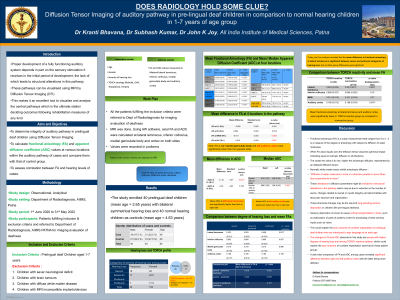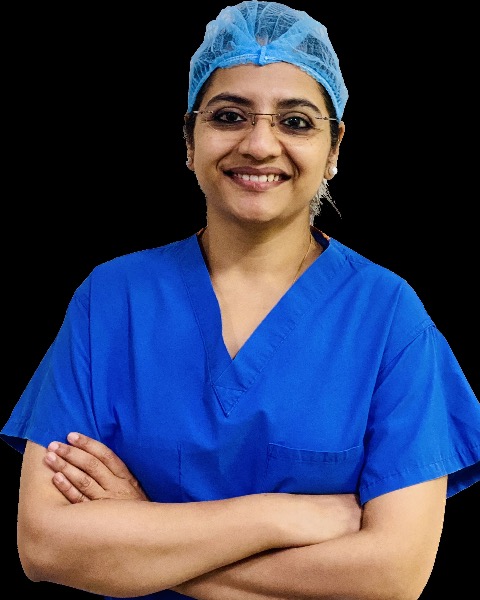Otology/Neurotology
(147) Does Radiology Hold the Clue: DTI of the Auditory Pathway
Monday, October 2, 2023
2:45 PM - 3:45 PM East Coast USA Time

Has Audio

Kranti Bhavana, MS, DNB
Professor Otorhinolaryngology
All India Institute of Medical Sciences Patna
Patna, Bihar, India- JJ
JOHN K JOY, MD
AIIMS PATNA
PATNA, Bihar, IND - SK
SUBHASH KUMAR, DM
AIIMS PATNA
PATNA, Bihar, IND
Presenting Author(s)
Co-Author(s)
Disclosure(s):
Kranti Bhavana, MS, DNB: No relevant relationships to disclose.
Introduction: Proper development of a fully functioning auditory system depends in part on the sensory stimulation it receives in the initial period of development, the lack of which leads to structural alterations in this pathway. The study aimed to determine the integrity of the auditory pathway in prelingual deaf children using diffusion tensor imaging (DTI).
Methods: The study design is observational case-control. The study was conducted for 1 year and 5 months (January 2021 to May 2022). Prelingual deafness was the condition studied. The study subjects comprised 40 children with prelingual deafness in the age group of 1-7 years and 40 children with normal hearing in the same age group. The study setting was the Departments of ENT and Radiodiagnosis, AIIMS Patna. No interventions were done. The outcomes measured were fractional anisotropy (FA) and apparent diffusion coefficient (ADC) at the bilateral lateral lemniscus, inferior colliculus, MGB and auditory cortex. Independent variables were age, gender, degree of hearing loss, TORCH serological status
Results: Significant decrease in FA and increase in ADC at all 4 locations along the bilateral auditory pathway in cases as compared to controls. (p < 0.001). A sidewise comparison of FA and ADC among cases revealed a significant difference between the right and left auditory cortex with the latter being more affected (p = 0.001). FA at the lateral lemniscus decreased significantly with increasing severity of hearing loss (p = 0.021). FA at both lateral lemniscus (p = 0.042) and auditory cortex (p = 0.016) were significantly lower in TORCH-reactive patients as compared to the non-reactive group
Conclusions: The reduction in FA and increase in ADC at various auditory regions of prelingual deaf children is indicative of structural alterations in the pathway that might result from long-standing sensory deprivation. The changes appear to be severe with higher degrees of hearing loss and among TORCH reactive patients.
